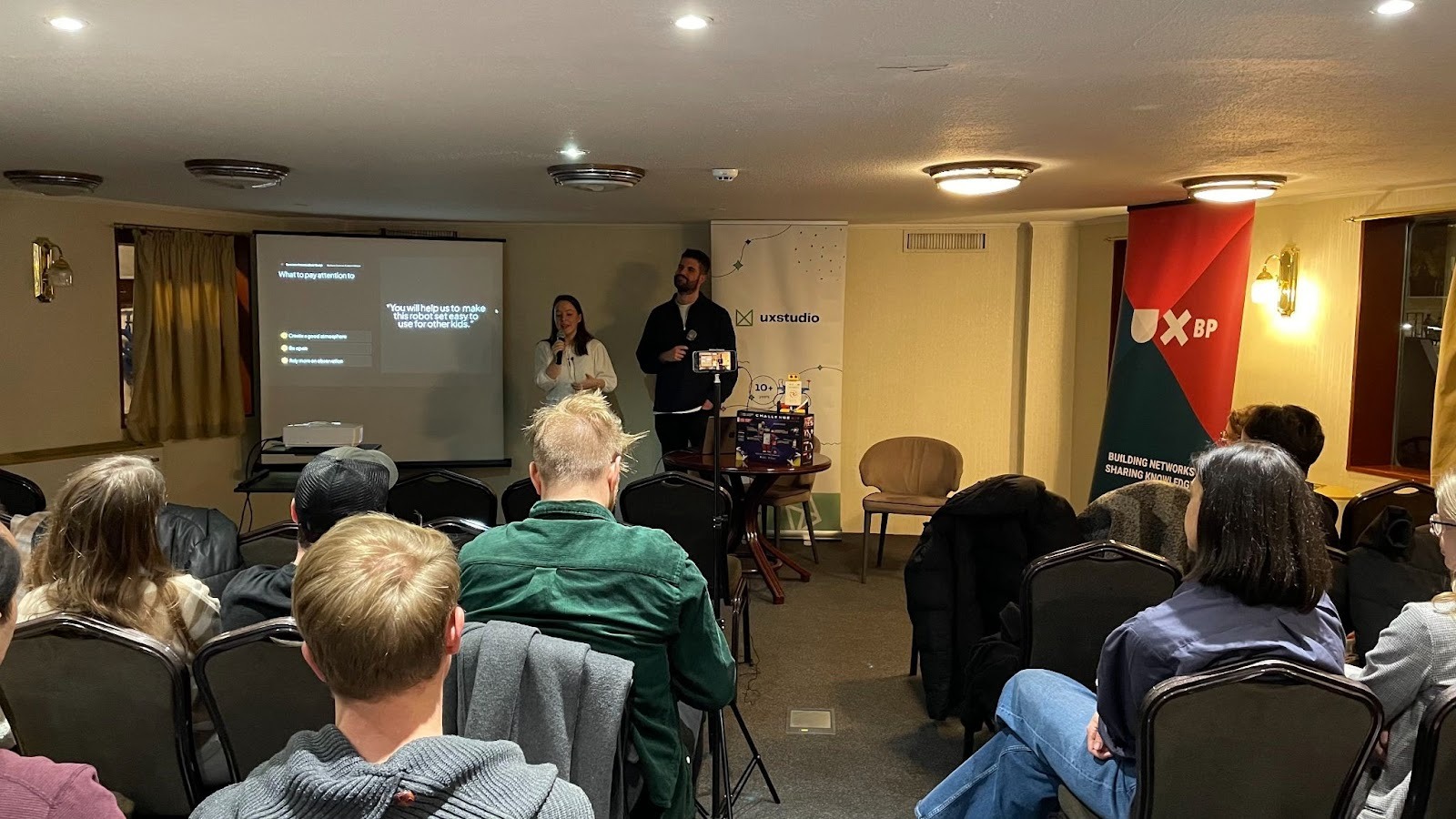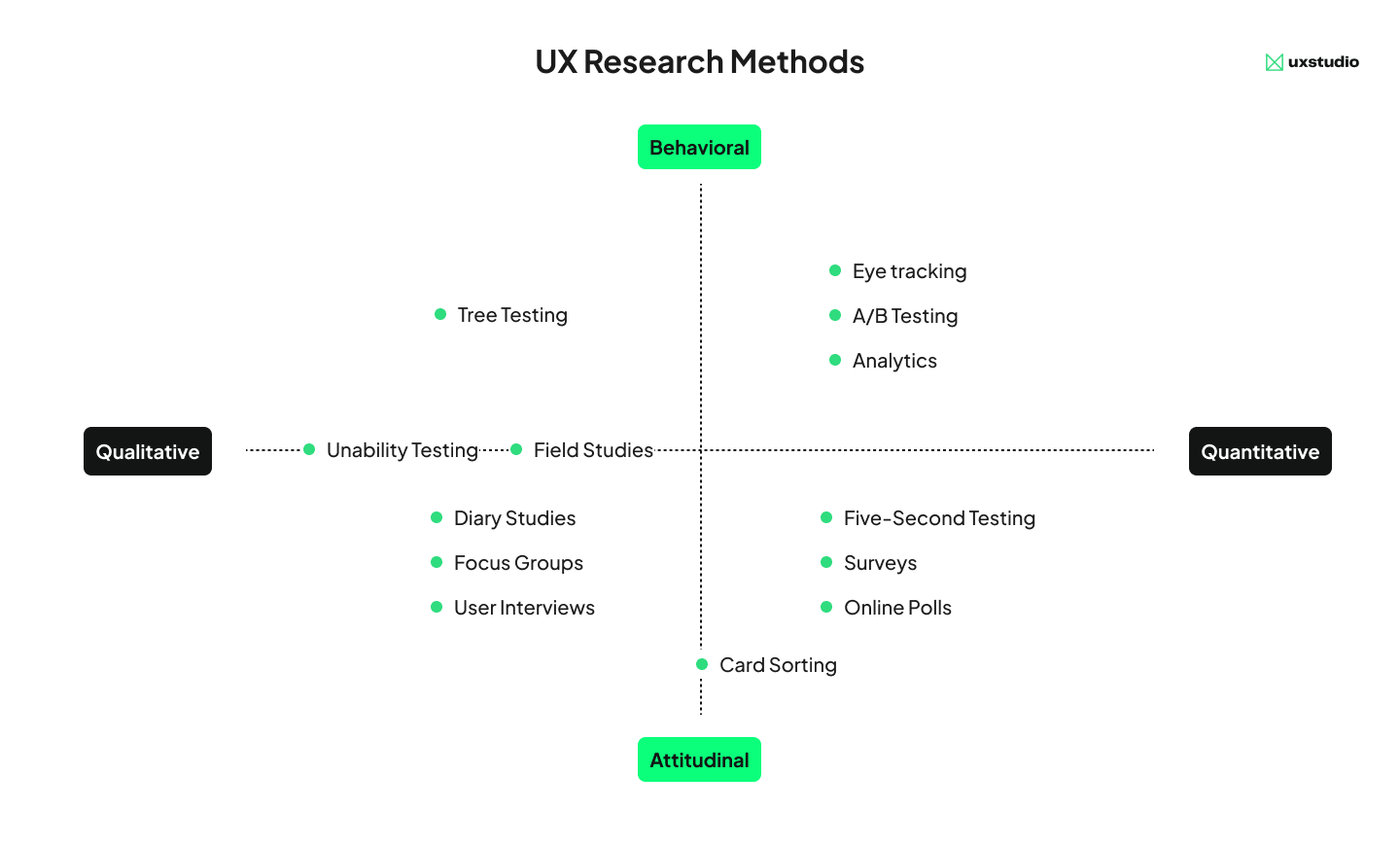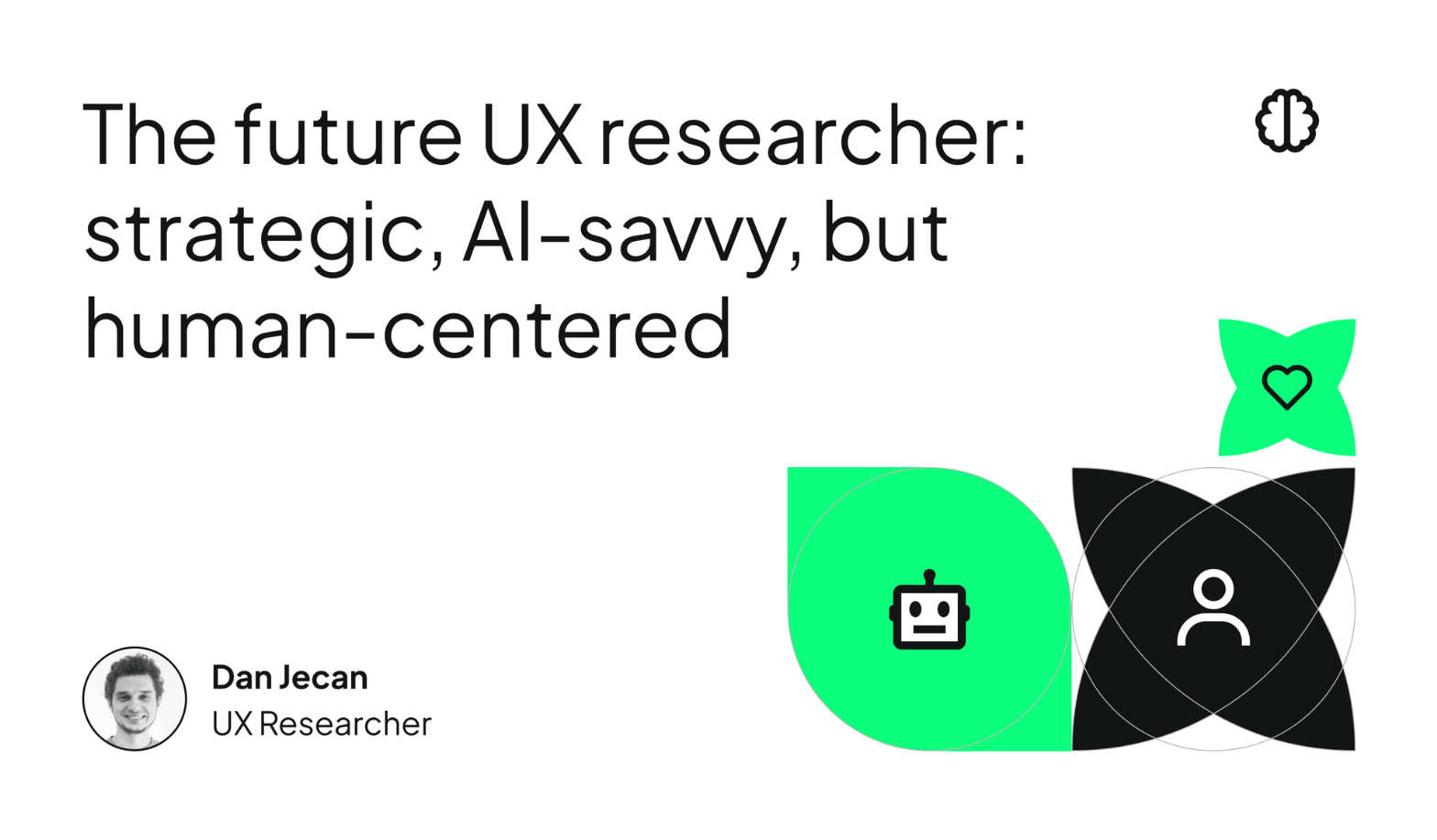What it really takes to build an embedded UX research team
UX research often happens behind the scenes, yet it shapes some of the most critical product decisions. We asked two of UX studio’s researchers to share their experiences working inside client teams.
- Borbála German works as part of a 6-person research team at an online car marketplace active in Europe and now Canada, supporting multiple teams with buyer- and seller-facing projects.
- Dan Jecan has been collaborating with a chemical supplier company for nearly three years as their only UX researcher, supporting several product teams with research on both internal data tools and external B2B products.
In this blog post, they’ll tackle what a UX researcher actually does day-to-day on long term collaborations, address common challenges, highlight surprising findings, and even share advice for junior researchers entering the field.
.png)
As a UX researcher, how would you describe your role in long-term client projects?
Dan Jecan: When I introduce myself to people who don't really know what UX research means, I often say that I'm the voice of the users within the product teams.
My role lets me be an advocate for the target audience. I can champion their needs based on my in-depth research, and it’s my responsibility to recommend solutions.
UX research covers user behaviors, challenges, motivations and pain points related to the product. On longer projects, I can follow up with users, get a better understanding of them as customers, and can represent them more effectively to decision makers.

How does UX research planning look like embedded in a client team?
Borbála German: In my current collaboration, project managers submit UX research requests through Jira templates quarterly. We discuss priorities, existing data and such, and decide when and what to do.
We also have strategic or internal research projects every quarter. Here, the objective can come directly from the UX research team or higher-level leaders as well. These can be based on previous research and user needs we’ve heard and want to expand on, or they can be big strategic projects such as buyer or seller segmentation.

How do you align UX research goals with product or business priorities?
Dan Jecan: By default, UX research and design goals are linked to business needs because the research requests come from the business side.
When it’s unclear how my research objectives support business OKRs, quarterly business goals, or any given KPIs, I’ll always follow up.
Then I’ll select the best research methods that suit their request, based on a form PMs fill out. The form has questions about what kind of business problems the product team, including UX research and design, need to address. This gives us a deeper understanding and full context to suggest next steps, possible solutions, and their potential impact.

What's the most surprising user insight you've uncovered while embedded in a project?
Borbála German: Once we had a research project about different notification types, and I was surprised to find that most users still prefer email notifications over any other type of channels!
The ongoing AI-hype also had some big learnings, though they’re less surprising. Companies are more trusting towards AI solutions than users are. So, in this ongoing hype, product teams, including us, researchers, need to learn how to build trust in AI products by providing enough context and transparency.

How does the length of a project influence the type of UX research you do?
Dan Jecan: On shorter projects, we tend to mainly focus on tactical research, such as usability testing to evaluate how an existing product performs. On longer collaborations, we can go beyond this and do more strategic research, like concept testing, which is not so focused on how the target audience interacts with the product, but more on the usefulness of what we're building.
Some PMs have the confidence to release features without testing, but that’s always a gamble. It can depend on the type of product. For products developed internally, usually the perceived stakes are lower. And that's because stakeholders have stronger assumptions regarding the users. For customer facing products, whether B2B or B2C, the perceived stakes are higher.
When I worked with an airline group, we did a lot of usability testing because we optimized the hell out of the booking process. Every single button, color, text, whatever, had to have a reason; every single small detail had to be tested, retested, and analyzed.

What are some recurring conversations about UX research?
Borbála German: I think one of these topics is when and in what order to use quantitative or qualitative research methods. While businesses tend to favor and prioritize quantitative research for its clear results, qualitative research adds important context.
For example, before running a quantitative A/B test we can use qualitative methods, such as user tests, to make sure the A/B test results won’t show misleading differences just because something is not clear to the users.
However, sometimes the order of these tests can be upside down, depending on development and release deadlines. We have had user tests after starting A/B tests just to make sure all was clear for users. One of these occasions ended with taking one of the variants down, because based on the user tests, it was confusing for them. This way, we could save resources.
Another situation where we can provide qualitative help with user tests is when A/B tests come back with results that don’t seem to make any sense. Then we can employ UXR methods to figure out what is happening with the designs.
So, it’s important to understand and communicate how qualitative and quantitative methods can work together effectively. In certain situations, combining these methods can save resources.

What advice would you give to more junior UX researchers?
Dan Jecan: I don't think it's enough to just present research findings to stakeholders and leave it at that. I think it's important to be present when decisions are being made, even if it's something more technical; so make sure you’re invited to those meetings.
It's especially important to be present when engineers are reviewing designs, so you can represent the target audience.
You need to be confident in the quality of research you did, your findings, your recommendations, and stand up for them.
Borbála German: During long term collaborations at corporate organisations, you need to, and will, learn new skills quite quickly.
A long term collaboration in a layered organisation will require soft skills and business skills as well, such as effective time management and lots of stakeholder communication. Sometimes these involve giving feedback to cross-functional partners, or providing your views on retros to director level people. You’ll gain experience quite quickly with management and stakeholder communication by doing these. So be brave, and practice when you can!

Why work with a UX research agency?
Building a strong research practice takes time, but you don’t have to do it alone. We at UX studio can help you integrate UX research into your workflows, manage participant recruitment, and establish efficient operations so projects can start right away.
Partner with us to strengthen your UX research function and make user understanding the foundation of your product decisions.



